“Without a four-year college diploma, it is increasingly difficult to build a meaningful and successful life in the United States,” according to an essay in PNAS, Life expectancy in adulthood is falling for those without a BA degree, but as educational gaps have widened, racial gaps have narrowed by Anne Case and Angus Deaton.
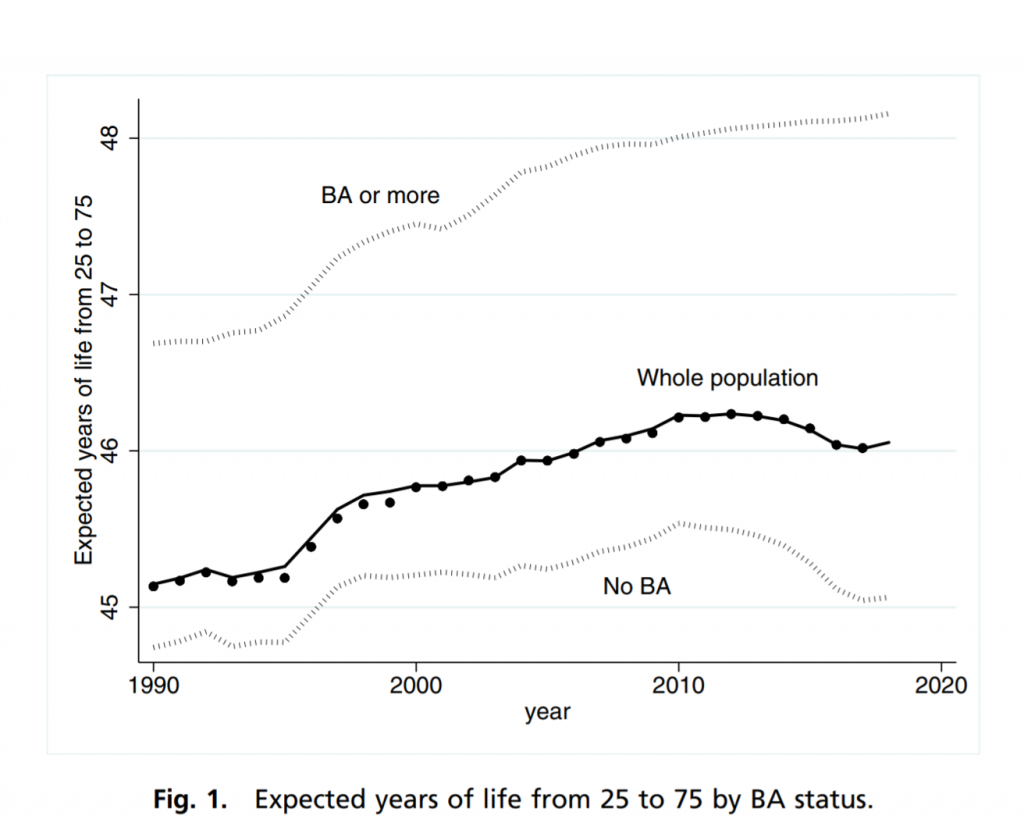 Case and Deaton have done extensive research on the phenomenon of Deaths of Despair, the growing epidemic of mortality among people due to accidents, drug overdoses, and suicide. Case and Deaton wrote the book on Deaths of Despair (detailed here in Health Populi),
Case and Deaton have done extensive research on the phenomenon of Deaths of Despair, the growing epidemic of mortality among people due to accidents, drug overdoses, and suicide. Case and Deaton wrote the book on Deaths of Despair (detailed here in Health Populi),
Case and Deaton begin this analysis recognizing nearly 100 years of declining mortality from the early 20th century up until the late 1990s. At that point, the research shows that Americans without a college degree had rising death rates due to drugs, suicide, and alcoholic liver disease — considered together as the “deaths of despair,” they coined in 2015.
The powerful three-word-phrase was coined in Case and Deatone’s 2015 essay, Rising morbidity and mortality in midlife among white non-Hispanic Americans in the 21st century, published in the Proceedings of the Natkonal Academy of Sciences (PNAS).
Since then, Case and Deaton have mashed up demographic and mortality data in various ways, contributing to the growing evidence base connecting dots between social determinants and death rates in America. Over the past several years, the researchers have explored demo’s like marital status, living alone, race, gender, and education. 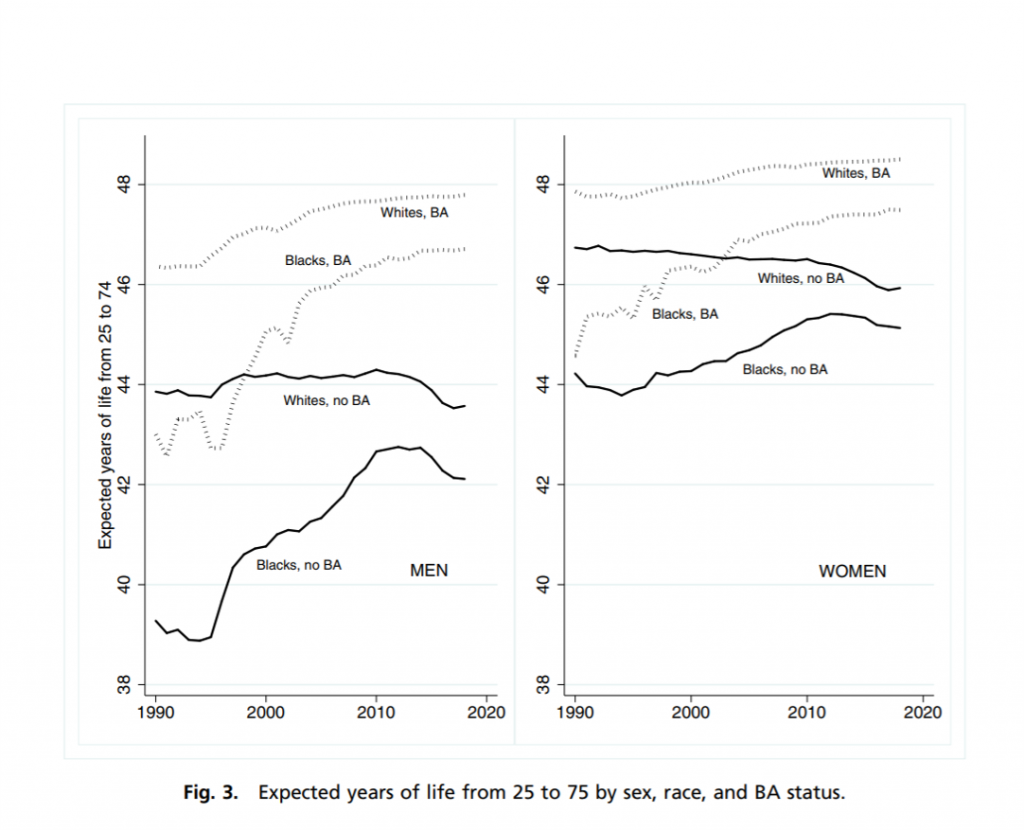
Six years since that first study, Case and Deaton focus in on education in this 2021 article: specifically, the relationship between a person in the U.S. have a 4-year BA degree and that individual’s life expectancy.
The first chart illustrates the trends of a person’s expected years of life from 25 to 74 from 1990 to 2020 by whether the individual had a BA degree.
The second charts show more details of life expectancy =by having a BA degree and by race (Black, White) and gender (Men, Women).
The trend lines show declining life expectancy for both men and women, White and Black, without a BA degree. The decline of life-years is more dramatic among men than women. The trend lines for Black people without BA degrees in the U.S. fall below those for White people without BA degrees.
Note the trend lines for both male and female Black Americans with BA degrees: the slope of the line for life expectancy gains was steady and increasing, up and to the right, from 2000 onward.
This is the BA divide in longevity: “For people with and without a BA, racial divides narrowed by 70% between 1990 and 2018, while educational divides more than doubled for both Black and White people,” Case and Deaton conclude.
They term that BA degree a “life expectancy premium.”
Their “causal story” isn’t so much that education leads to better health which enables people to live longer. Instead, Case and Deaton point to the “broader social and economic processes in which the BA degree is increasingly used to separate people.” That is the growing chasm between so-called working-class people without college educations and the more digitally-enabled knowledge economy jobs — exacerbated by “the increased demands for more educated workers to operate the robots” and the forces that “work to deprive working-class life in America of meaning and social structure.”
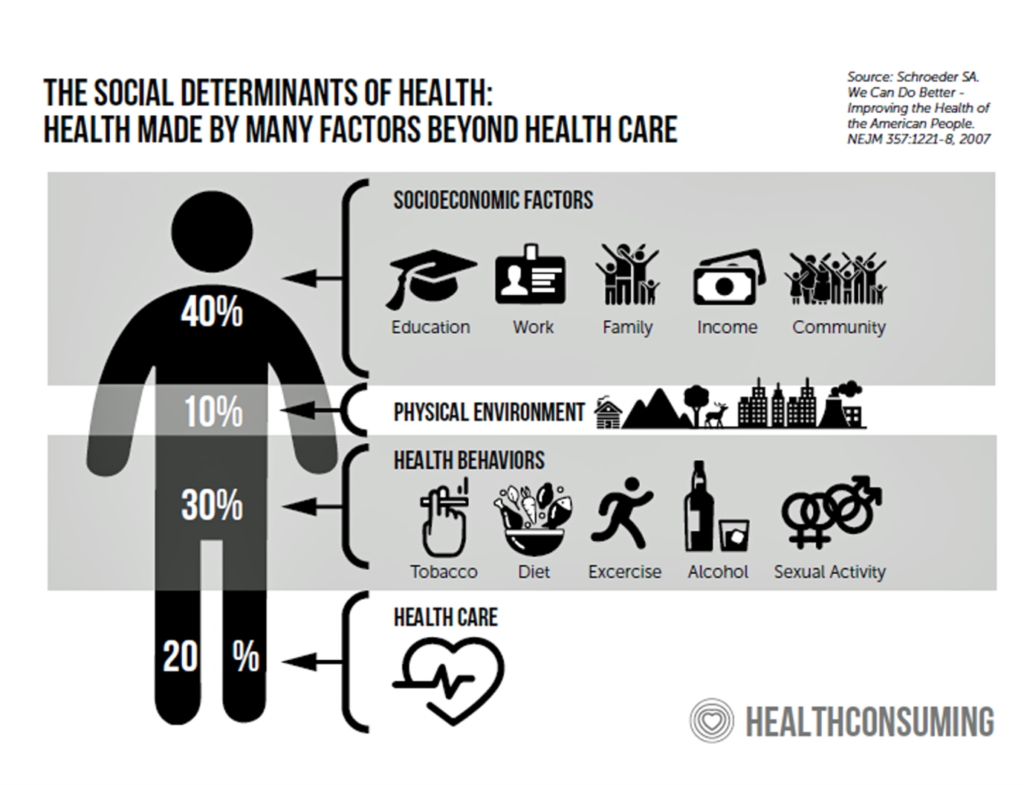 Health Populi’s Hot Points: Education lays a person’s foundation for a their socioeconomic status over the years from youth through adolescence and into the workplace. Case and Deaton’s work on the factors underlying Deaths of Despair and declining life span for some people in the U.S. make the case that education is a key contributor to a longer life.
Health Populi’s Hot Points: Education lays a person’s foundation for a their socioeconomic status over the years from youth through adolescence and into the workplace. Case and Deaton’s work on the factors underlying Deaths of Despair and declining life span for some people in the U.S. make the case that education is a key contributor to a longer life.
The book Bowling Alone: the Collapse and Revival of American Community was published in 1990 by Robert Putnam, an early signal that intuited the growing chasm in America that, today, we see in politics, society, and even in public health.
In Bowling Alone, Putnam studied the decline of social capital — as he defines it, “not just warm and cuddly feelings, but a wide variety of quite specific benefits that flow from the trust, reciprocity, information, and cooperation associated with social networks. Social capital creates value for the people who are connected and – at least sometimes – for bystanders as well.”
Ring a bell? Sound familiar?
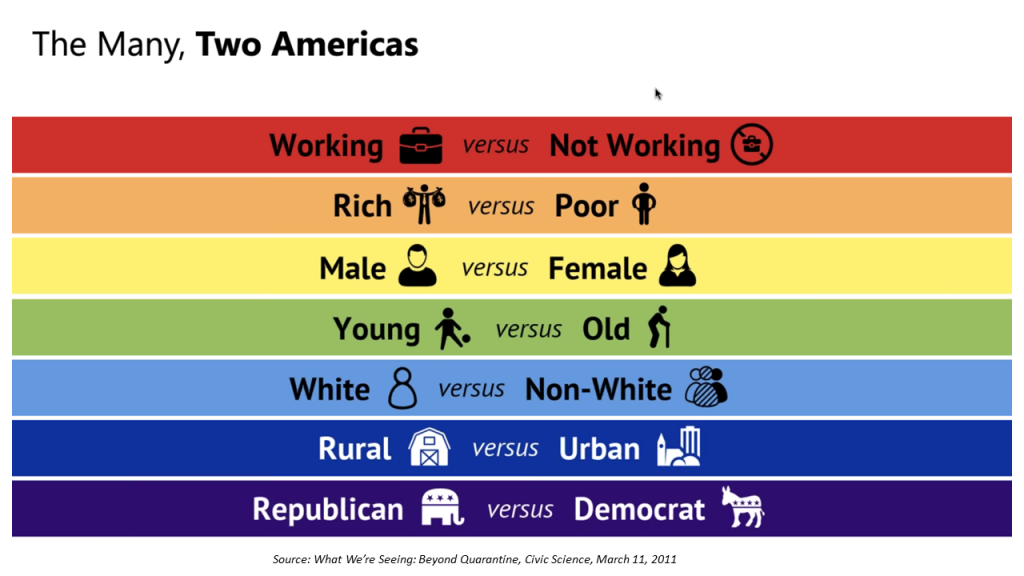 Civic Science’s poll conducted in early March 2021 found striking differences across U.S. adults by many different traits – gender, age, race, urban/rural dwellers, working and non-working people. Across the many, Civic Science researchers summarized, there are Two Americas.
Civic Science’s poll conducted in early March 2021 found striking differences across U.S. adults by many different traits – gender, age, race, urban/rural dwellers, working and non-working people. Across the many, Civic Science researchers summarized, there are Two Americas.
In the COVID-19 pandemic, this is playing out in vaccine hesitancy, commitments to wearing face masks and physically distance, and other daily behaviors that science tells us can make a difference in spreading or containing the virus.
Case and Deaton’s latest PNAS research into BA’s and life expectancy mashed up data from before the coronavirus emerged in America. They note, however, that the social and financial impacts of COVID-19 have risks that can foster continued Deaths of Despair in the U.S. “The educational divide in mortality is likely to widen further given those without a BA are more likely to be at risk through their occupations while many of those with a BA or more can work remotely and safely.”


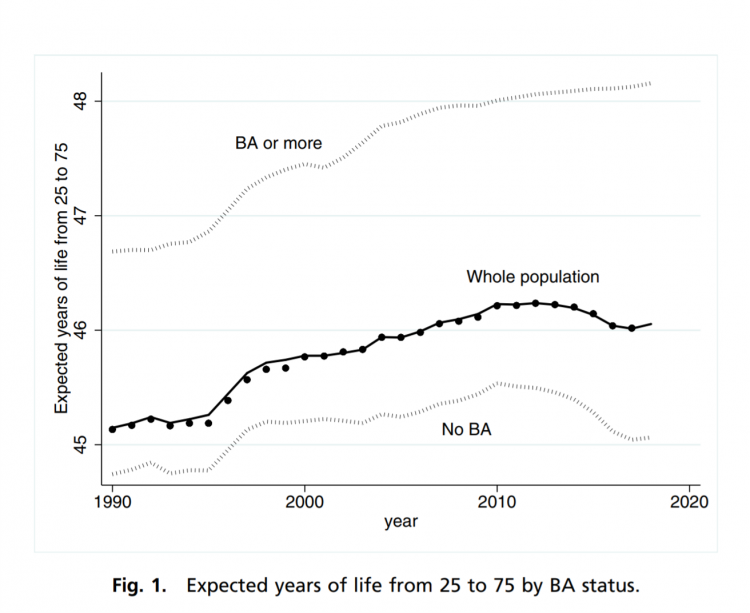


 Thanks to Feedspot for naming this blog, Health Populi, as a
Thanks to Feedspot for naming this blog, Health Populi, as a